Take a closer look at four summer-flying solitary bees that you could spot in the North East with naturalist, Charlotte Rankin.
Once spring-flying bees are done and dusted for the year, there are new solitary bees on the block. The activities of solitary bees such as Leafcutter Bees, Yellow-face Bees and Plasterer Bees reach their peak in mid-summer. Below are four solitary bees you are likely to encounter in your garden and local greenspaces this summer.
Please do share your summer bee sightings with the North East Bee Hunt. Your records improve our understanding of these important insects in the North East.
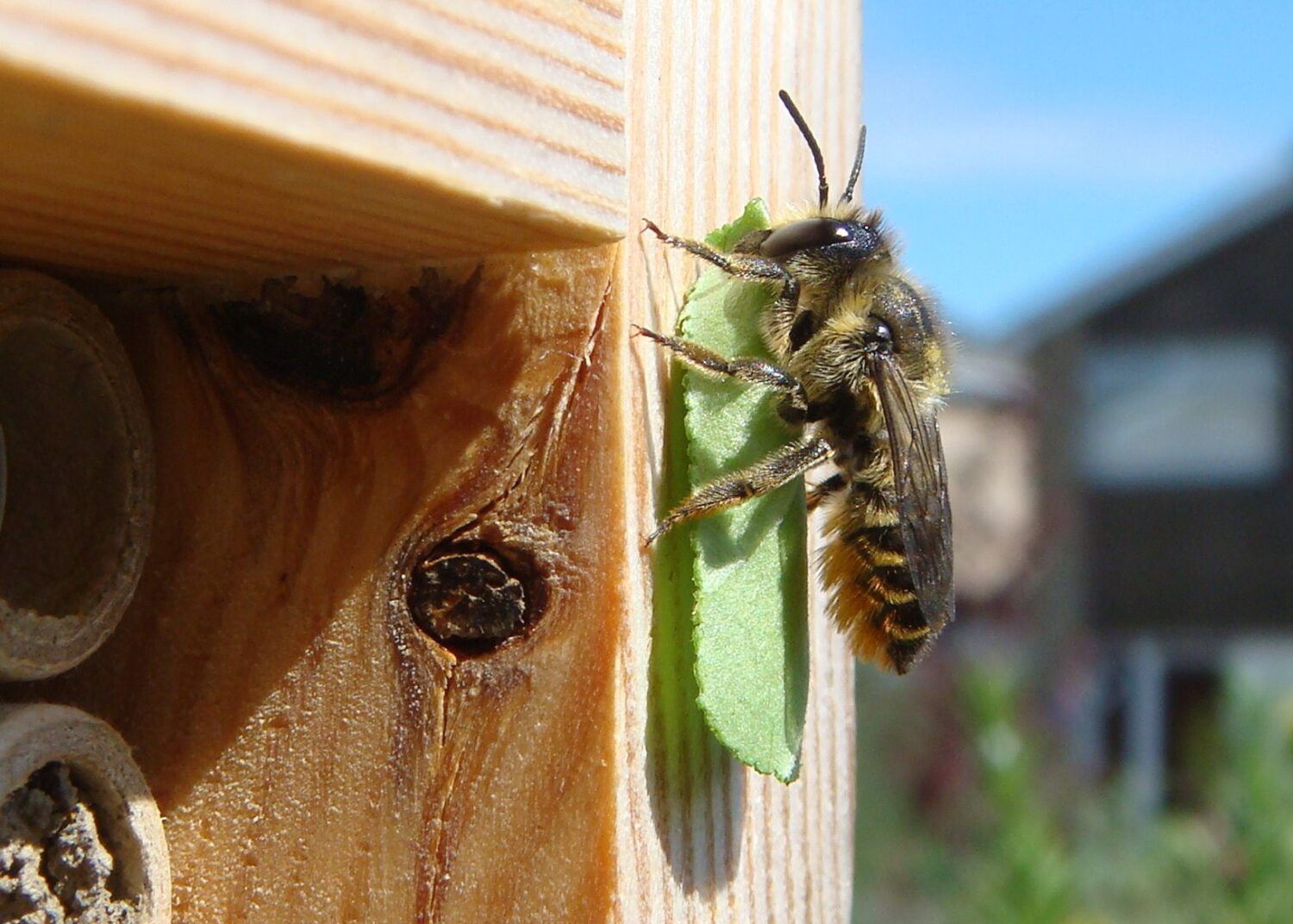
Leafcutter Bees
Leafcutter Bees are your summer bee hotel residents. Emerging later than their mason bee neighbours, their activity peaks in July.
Leafcutter Bees are medium-sized bees with large, wedge-shaped jaws and a pollen brush on the underside of their abdomen. Females use their powerful jaws to cut sections of leaf, using these sections to line their nest. Dozens of leaf sections may be collected for one nest cell.
Unlike most bees, females collect pollen on their underside using special pollen-collecting hairs, which form a pollen brush. The colour of these hairs can help you identify the species. The Patchwork Leafcutter Bee, for example, has an entirely orange pollen brush.
Leafcutter Bees use a variety of plants, particularly Rose leaves. Look out for neat, semi-circular holes cut out of your garden plant leaves.
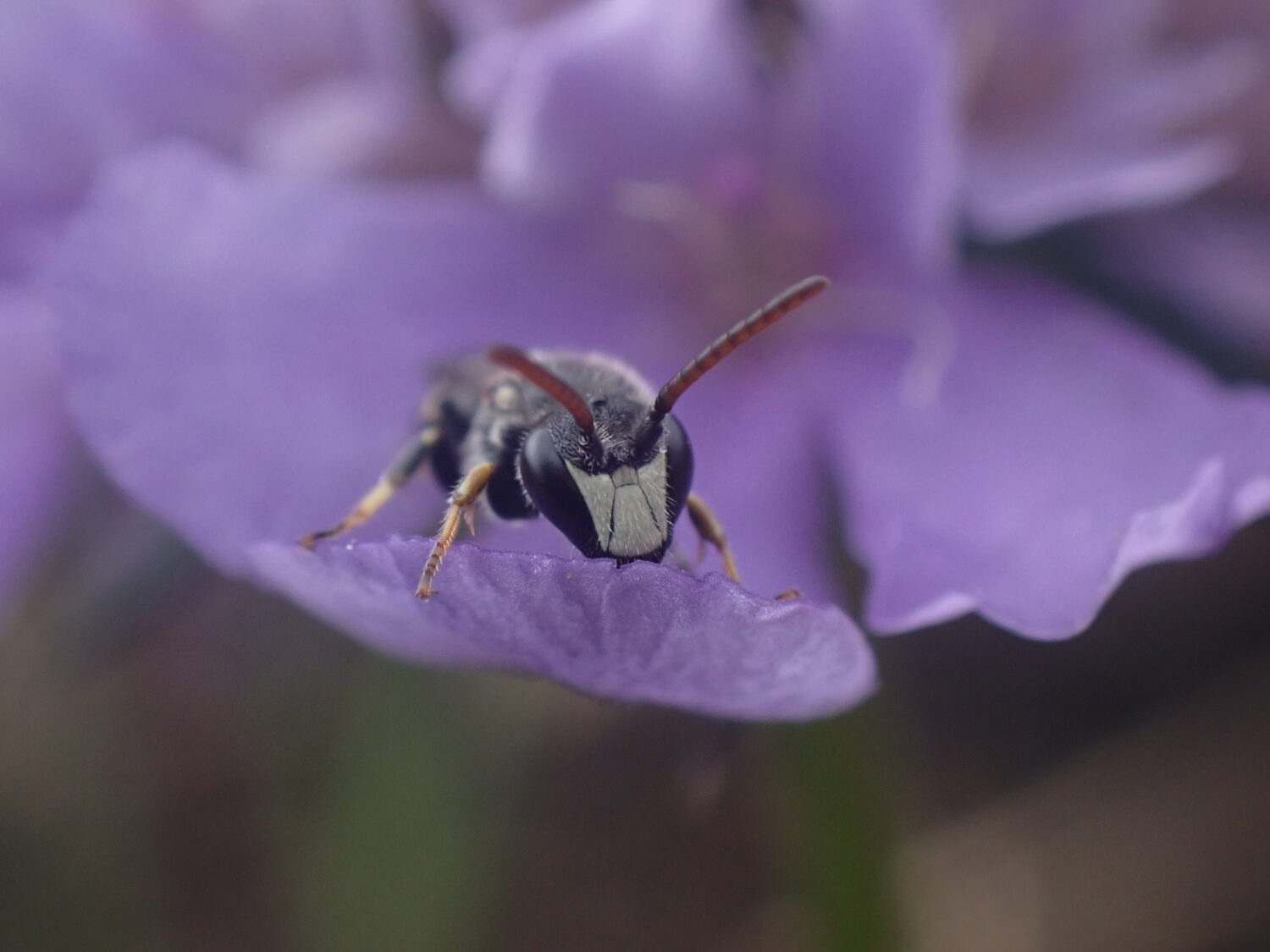
Yellow-face Bees Hylaeus species
Often mistaken for wasps, Yellow-face Bees are small black, sparsely haired bees. Both females and males have yellow or cream markings on their face. Males have more extensive facial markings, forming a ‘mask’.
While tricky to identify to species. the bee group can be identified by the yellow facial markings, black body and overall hairless appearance.
Rather than having pollen-collecting hairs, females swallow pollen to later regurgitate back at their nest. They also secrete a cellophane-like substance to line and waterproof their nests.
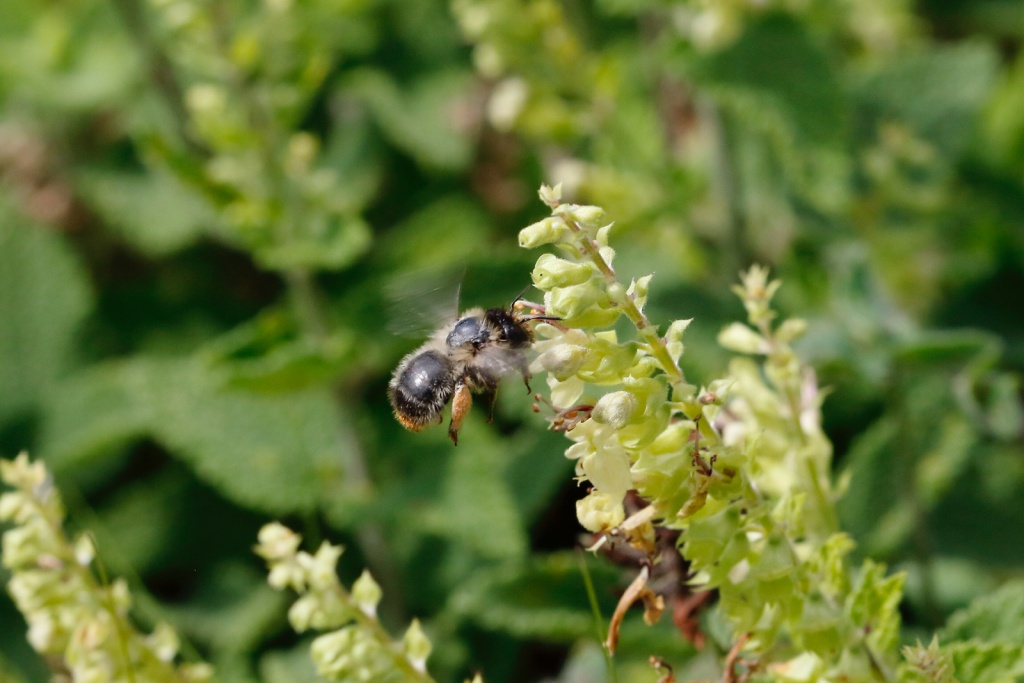
Fork-tailed Flower Bees
The summer relative of the Hairy-footed Flower Bee, Fork-tailed Flower Bees are bumblebee-like. However, a key giveaway is their zippy flight and shrill buzz.
Females nest in dead wood, using wood dust to line their nests. Fork-tailed Flower Bees are gingery bees and usually have a darker hair band between the wings. Females can be identified by their orange tail tip, while males have a distinctive yellow ‘mask ‘ on their face.
The Fork-tailed Flower Bee is a target species of the North East Bee Hunt.
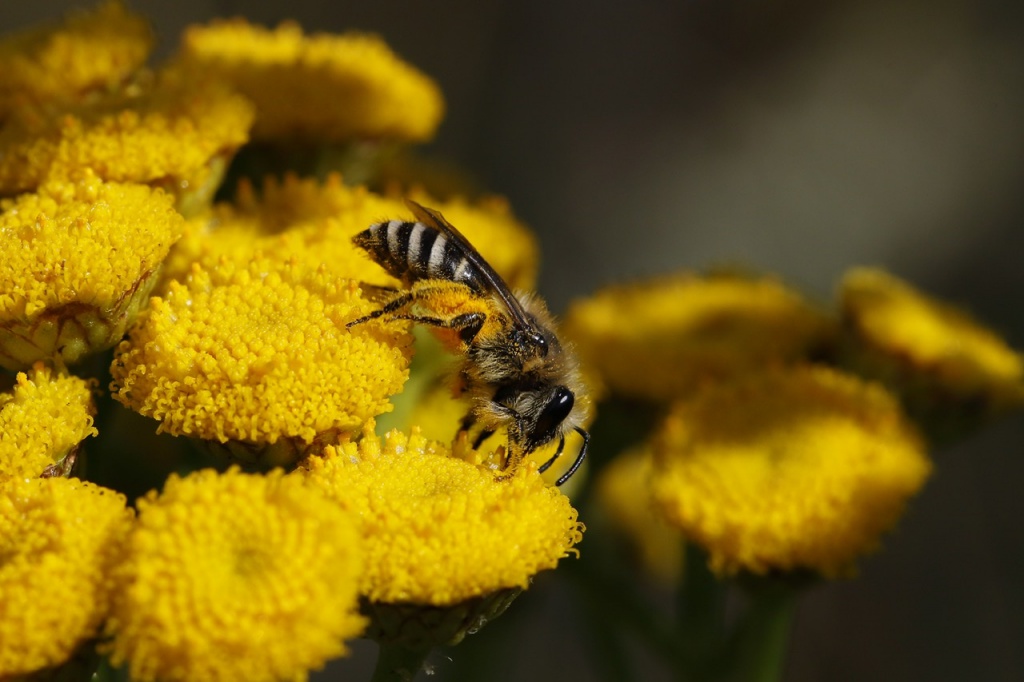
Plasterer Bees Colletes species
Small and stripey, Plasterer Bees resemble humbug sweets with cream bands on their abdomen. They also have a distinctive ‘heart-shaped’ face and very short tongues.
Giving rise to their name, females secrete a cellophane-like substance to line and waterproof their nests.
In gardens and parks, you are most likely to encounter the Davie’s Colletes Bee. Found on plants such as Ox-eye Daisy and Yarrow, females collect pollen from members of the daisy family.
Females nest in burrows, typically in light and sandy soils.
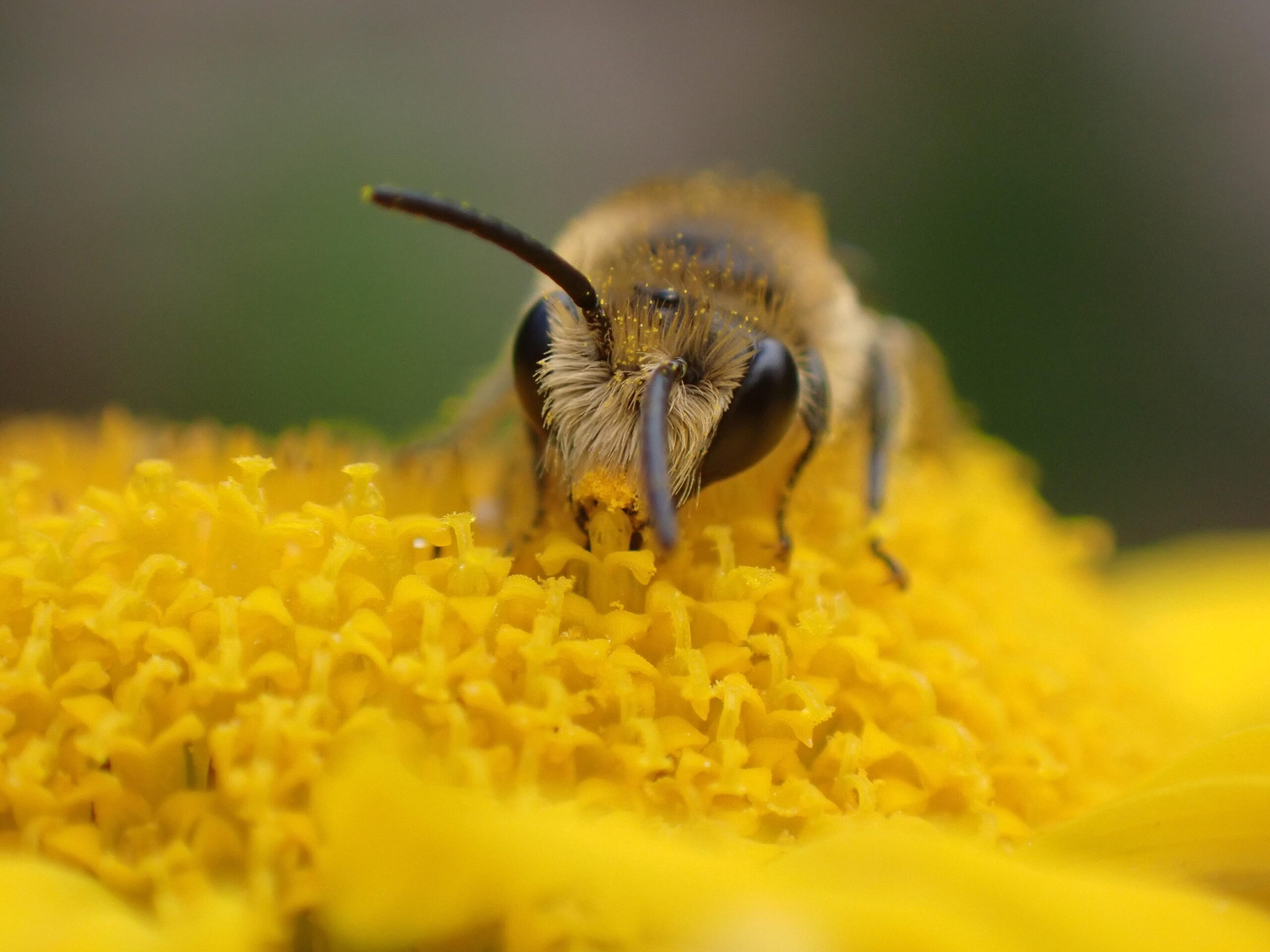
Join the North East Bee Hunt
Urban or rural, beginner or expert, we need your help to record bees across the North East this summer.
Your records can add to our understanding of bees in the region and inform conservation and monitoring efforts.
Taking part is easy and every record counts, wherever you live in the region. Records of all bee species are encouraged.